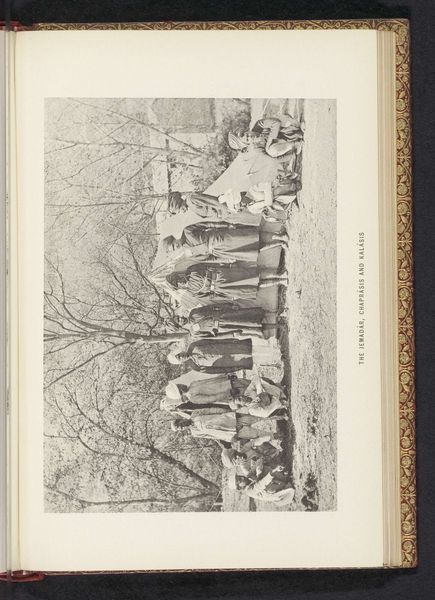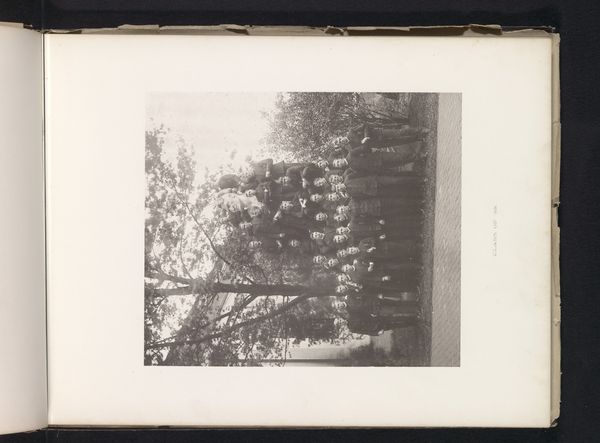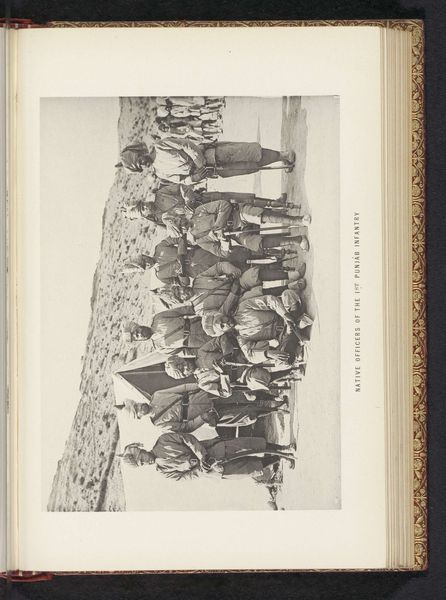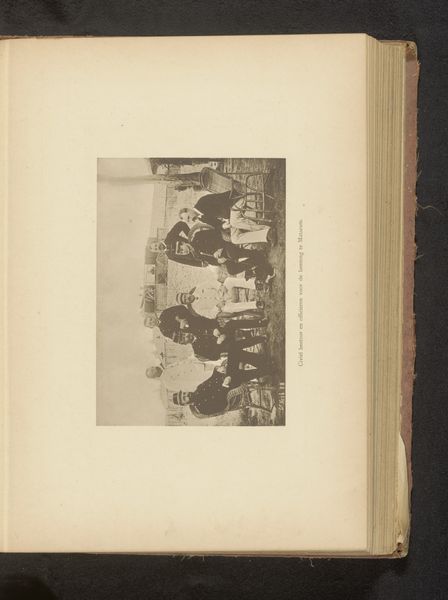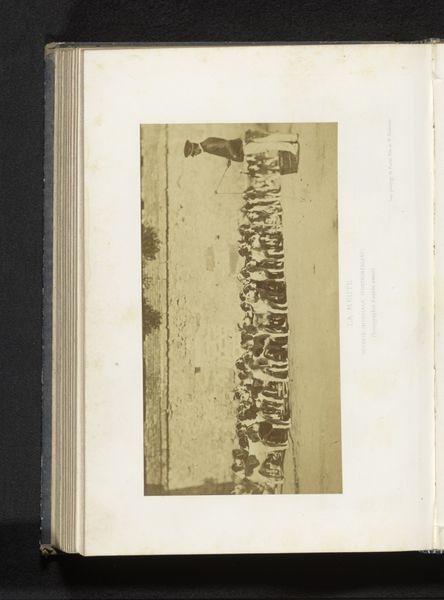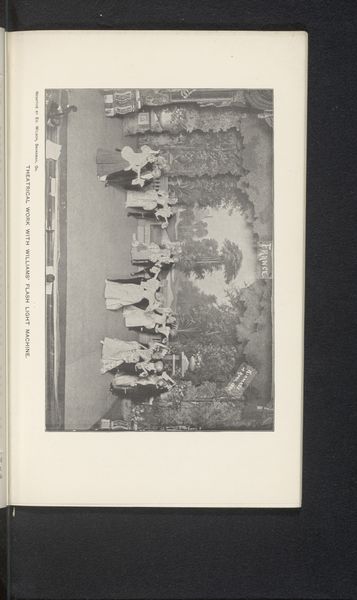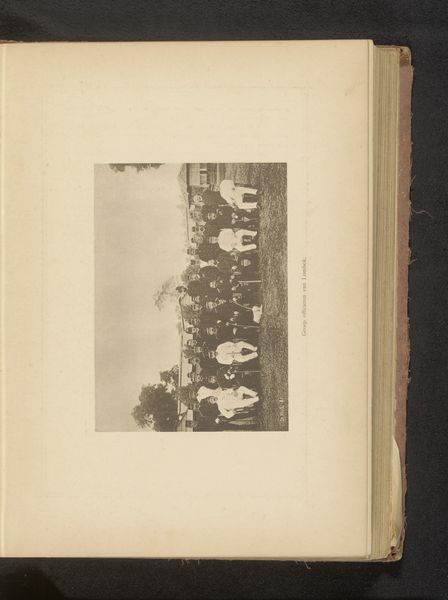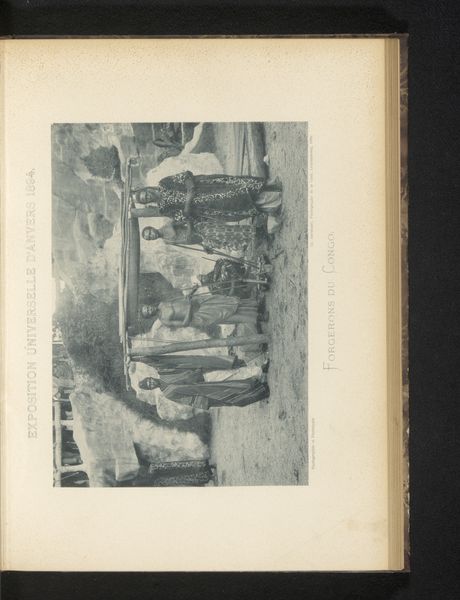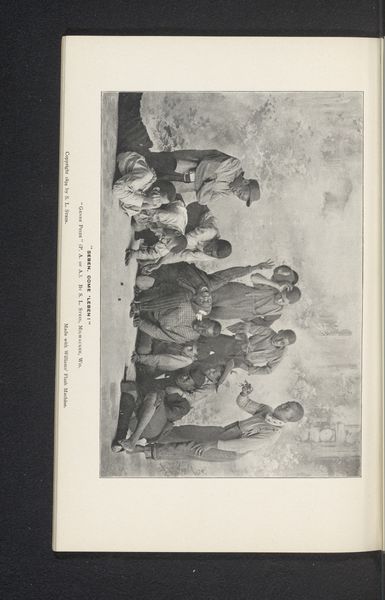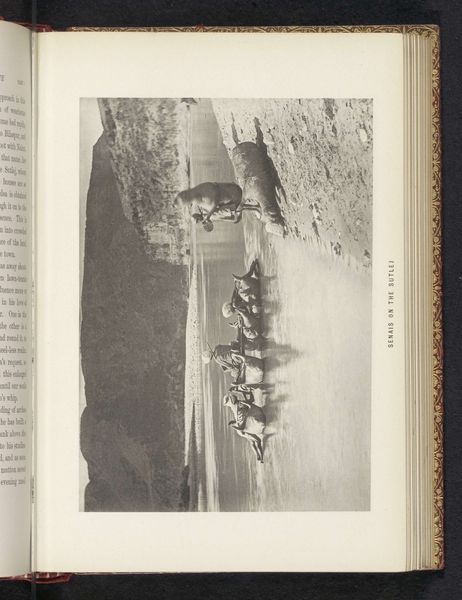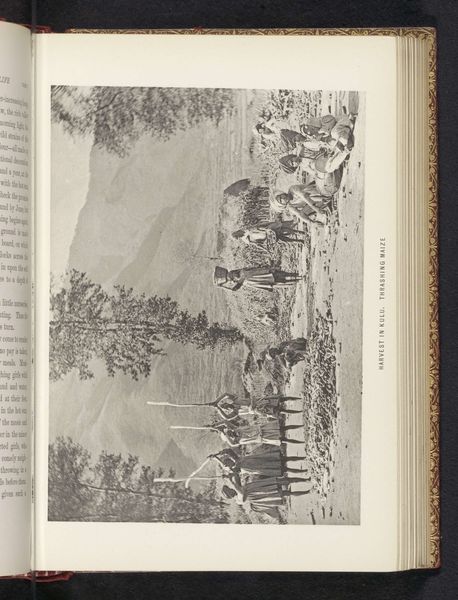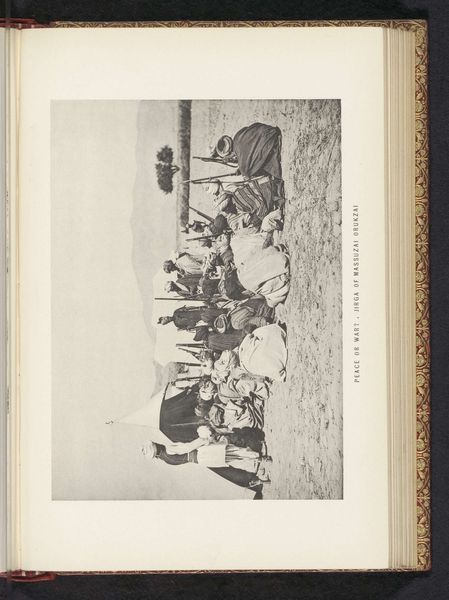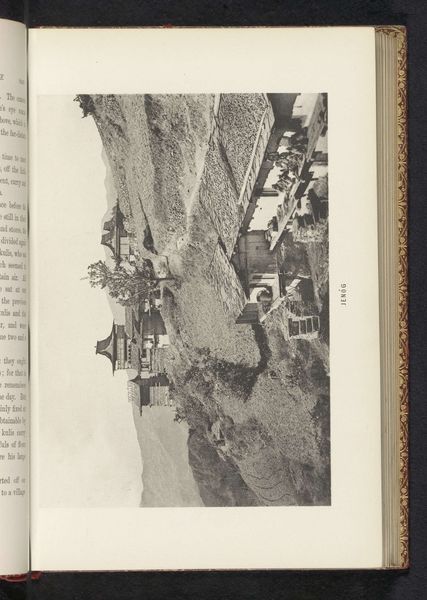
#
aged paper
#
sketch book
#
hand drawn type
#
personal journal design
#
personal sketchbook
#
journal
#
pen and pencil
#
pen work
#
sketchbook drawing
#
sketchbook art
Dimensions: height 119 mm, width 168 mm
Copyright: Rijks Museum: Open Domain
Curator: Here we see an image of Mír Akbár of Shakadara with his sons, published before 1895, reproduced here from a personal journal or sketchbook. What’s your initial impression? Editor: The sheer number of figures in this group portrait is striking. There’s a formal, almost stoic quality, but something about the setting – what looks like a mountain backdrop – hints at a more complex story. Curator: I am immediately drawn to the book itself. The physical nature of the artifact speaks volumes. The aged paper, the way the ink sits on the page, suggests a deliberate act of preservation, perhaps even veneration. We can see the constraints within which this image was produced, likely a pen and perhaps pencil in a field notebook or sketchbook. Editor: I find the visual language interesting; this gathering becomes more meaningful when viewed as a depiction of lineage and continuity, given the emphasis on Mír Akbár and his sons. Note the repetition of turbans and garments; a distinct, formal way of showing identity. The mountain, in the background, becomes symbolic, representing permanence. Curator: The clothing they wear interests me in relation to what is nearby - are those homes in the distance? The construction of identity via available materials. Who is doing this labor, to craft their turbans and garments, to etch their image onto this book? Was this Frederick Saint John Gore, as stated in the book, documenting what he was seeing in his experience or asked to be involved as a documentarian? Editor: It is intriguing to think about Frederick Saint John Gore, whose name is included with the listing here. Did he choose to portray this gathering because of his own understanding, fascination with it, his values? Or were there also political or social calculations at play? Did the sons here matter more than others for his political cause? Curator: I'm left wondering about the hands that physically assembled the journal, bound the pages, and created a repository for the original artist's vision. I'm taken with what they wanted to portray here for the sake of documentation. Editor: Absolutely. Ultimately, the image offers a fascinating glimpse into the values, customs, and the recording of visual cultural heritage through inherited symbols.
Comments
No comments
Be the first to comment and join the conversation on the ultimate creative platform.
